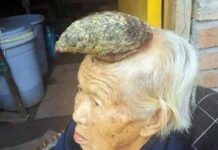Everyone is beautiful in their own way, but some tribes take their beauty standards to the whole next level. Different tribes believe in different features, and we are going to discuss some of them today. From additional objects to body parts, there is beauty in them all. Let’s take a look and see which one you think is the most extraordinary among the 10.
1Afar Tribe
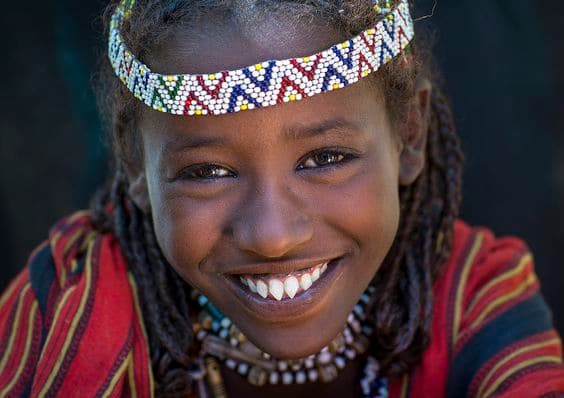
Beauty Standard: Teeth Chiseling
Where: Ethiopia
Among many fascinating tribes in Ethiopia, Afar is definitely one of them when it comes to beauty standards. The main symbol of women’s beauty in this tribe is sharp teeth which can be done by chiseling. Tribal members believe that women with sharp ends of their teeth are more beautiful. So when young girls reach puberty, they will undergo a painful chiseling process as a rite of passage into womanhood. Along with that, the Afar people braid their hair in special ways and it is very easy to recognize their members.
Afar tribe is an ethnic group that inhabits the Horn of Africa that lies along the southern boundary of the Red Sea. The Afar people live in small shelters that they can easily disassemble and reassemble that fit their nomadic pastoralist lifestyles. Members of this tribe are mostly livestock holders so they raise animals such as camels, cattle, goat, sheep, and more. At the same time, they also do cultivation, migrant labor, and trade as well due to shrinking pastures. This is also why Afar people are increasingly moving to larger cities instead of embracing their traditional nomadic lifestyle.
2Apatani Tribe
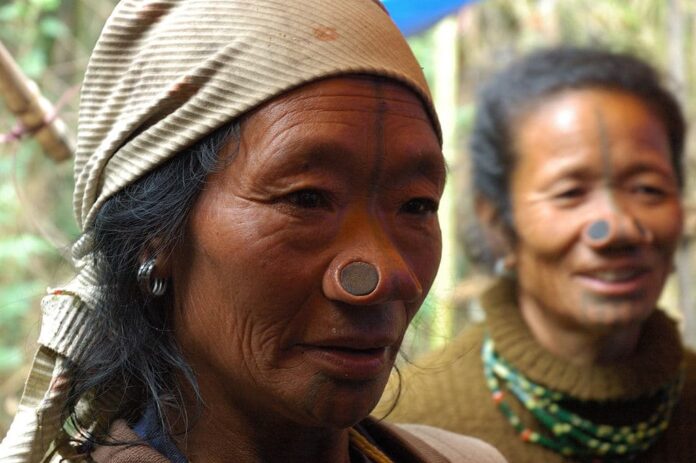
Beauty Standard: Nose Plugs
Where: India
One of the unusual beauty standards among tribes is definitely the nose plugs from the Apatani tribe. It began when the Apatani women would tattoo dark facial marks on their faces and plug each side of their noses. Women from this tribe were considered to be the most beautiful among the neighboring tribes. So this practice was originally to appear more unattractive so that rival tribal raiders will not kidnap them. Surprisingly, it became a beauty standard since then. It is no longer a practice since the 1970s, so you will not see young Apatani women with this beauty symbol anymore.
3Bodi Tribe

Beauty Standard: Big Belly
Where: Ethiopia
Photos of a tribal man with a big belly have been going around on the internet since early in 2021. He is from the Bodi tribe where standard beauty focuses on men with big bellies. This is why men in the Bodi tribe eat certain things such as cow blood or a concoction of blood and milk. In fact, it is a tradition where young men will be fed the concoction and special meals for six months. This is to make their stomach size grow and become fatter because the fattest man will be crowned as the winner. The champion fat man is feted as a hero for the rest of his life, how about that?
This competition is not easy because vomiting from chucking too much concoction fast means disqualification. After 6 months, the men will design their bodies with ashes and clay before emerging from their huts. The ceremony involves them spending long hours walking in circles around a sacred tree in the village. During that walking moment under the scorching sun, there are women who help ply them with alcohol and wipe away their sweat. Once the fattest man has been chosen, village elders will inspect the stomach to see if he has a bright future or not. This practice holds every generation, and the man remains a hero for life even if he is no longer fat.
4Dayak Tribe
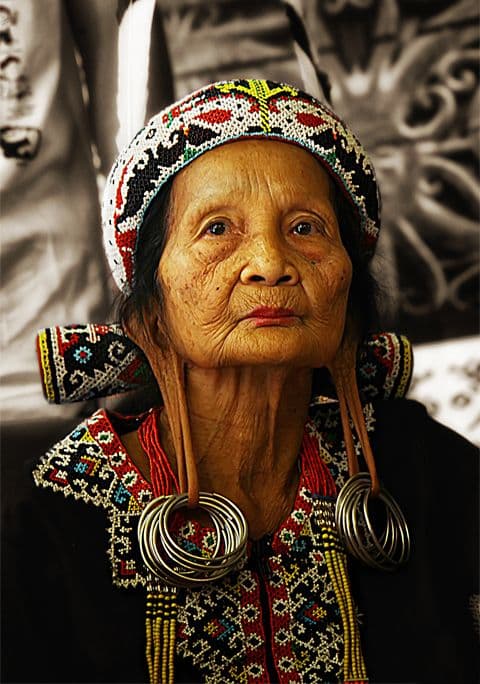
Beauty Standard: Elongated Earlobes
Where: Indonesia
While many tribes focus their beauty on the face and hair, the Dayak tribe takes a different approach. In this tribe, long ears are considered beautiful and the longer the ears mean the more significant a woman is. This is why women start wearing brass weights from a young age, and they also add more weights each year. These brass weights play the main role in stretching the earlobes while adorning them at the same time. This tradition is dying since young women in the tribe no longer practice it.
5Himba Tribe
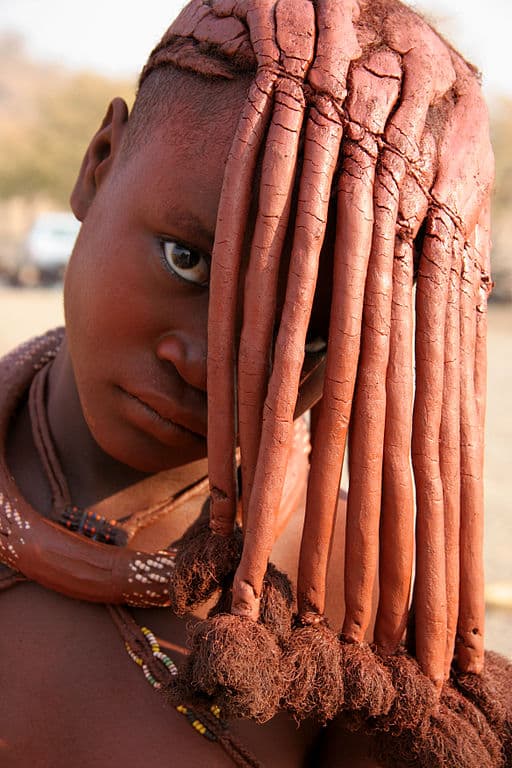
Beauty Standard: Red Skin
Where: Namibia
Skin is one of the common beauty standards around the world, but things are unique in the Himba tribe. The Himba women apply “otjize” which is a paste of butter, fat, and red ochre on their hair and skin on a daily basis. This particular paste gives their hair and skin a distinctive red hue, hence their nickname “red women”. Apart from the unique color, it also functions as a sunblock that protects their skin from the sun.
Another fascinating thing is that women in this tribe also have unique hairdos as well. They style their hair by using a mix of butter, goat hair, and ground ochre to form dreadlocks. A teenage girl can have her dreads hanging above her eyes, but the young lady who is ready for marriage ties them. After marriage, both men and women cover their heads with turban which they will never take off except during funerals.
6Kayan Tribe
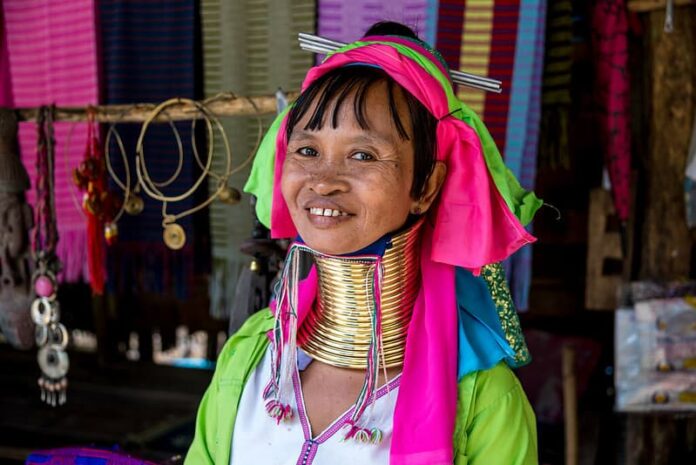
Beauty Standard: Long Neck
Where: Myanmar
Many tourists visit Myanmar with one important destination in their mind, to see the long neck women. Kayan tribe is famous for “giraffe women” who wear brass coils around their necks. Starting at the age of 4 or 5, young girls will begin wearing their first brass rings. Then they will add one coil each year, and it also depending on the wealth of the family. Traditionally, these rings are expensive so not every family can afford them. The thing is that most women do not only wear brass coils on their necks but also shins and wrists. This is why those rings are not only the symbol of beauty but also wealth.
Originally, women in this tribe wore brass coils to make them less attractive so that rival tribes wouldn’t kidnap them. As time went by, it has become a part of a cultural tradition that the tribe embraces until today. The drawback is that those coils are very heavy. Imagine having to carry around 20 kilograms (25 pounds) of neck coils every day even when sleeping and working. This is why most younger women in some villages choose not to wear the rings anymore saying it is an antiqued practice. However, there are still some tribes along the border in northern Thailand that still practice this tradition. Because this unique attracts tourists which provides revenue for the villagers, the tradition still goes on.
7Mundari Tribe

Beauty Standard: Facial Scarring
Where: South Sudan
Smooth facial skin is not beautiful, and this is the only thing you hear when you are in the Mundari tribe. When young girls reach adolescence, they will undergo the painful ritual of scarring their faces and then covering them with ash. The typical scar pattern includes two sets of three parallel lines, and that is how they define a beautiful woman. At the same time, they also cover their face with ash to protect their skin from insects and the sun. Another fashion trend in the tribe is dyeing their hair orange using cow urine. The cow is everything to the Mundari tribe, and they make use of the cow to their advantage in everyday life. This is why people in the tribe guard and protect the cows with their lives.
8Mursi Tribe

Beauty Standard: Lip Plate
Where: Ethiopia
Probably bizarre to some, the beauty standard of women in the Mursi tribe is determined by the size of the lip plate. The bigger the lip plate means the more beautiful a woman is, simple as that. When a young girl turns 15, her lip is cut and a wooden plug is placed until the wound heals. The girl can decide how far she wants to stretch her lip by inserting large plugs. After a few years, her lip plate is large enough to accommodate pottery with the designs that she prefers. The origin behind this was to stop slavery because mutilated women are not fit to be a slave. Since then, this act of protection has become a symbol of beauty and recognition of women from this tribe. Along with the lip plates, women also decorate their heads with floral crowns or horns and paint their faces.
9Mwila Tribe

Beauty Standard: Hairstyle
Where: Angola
It is normal to follow the new hairstyle trends, but the Mwila tribe takes the hairdo to the next level for years. You can tell the situation or status of women in this tribe by just looking at their hair. Most girls or women in the tribe split their hair into either 4 or 6 sections, and that is called Nontombis. They do so by using a paste made from butter, herbs, oil, red stone, and tree bark to their locks. Then they adorn their hair with beads, cowries, or even dried food and wear headrests to protect the hair. If you see a Mwila girl with 3 nontomnis, that means someone has died in their family.
On top of the hair, Mwila women also have another beauty standard which is colorful necklaces. According to them, each period of their life corresponds with a specific type of necklace. Young girls wear red heavy necklaces made with beads coated with mixed soil and latex. Later, they will wear a yellow set of necklaces made from wicker-covered earth instead. After marriage, they wear a set of stacked up necklaces that they will never take off. Most of their thick collars are made from beads and mud with colors that match their preferences. Since they must keep all the necklaces, they never take them off even when they sleep.
10Yanomami Tribe
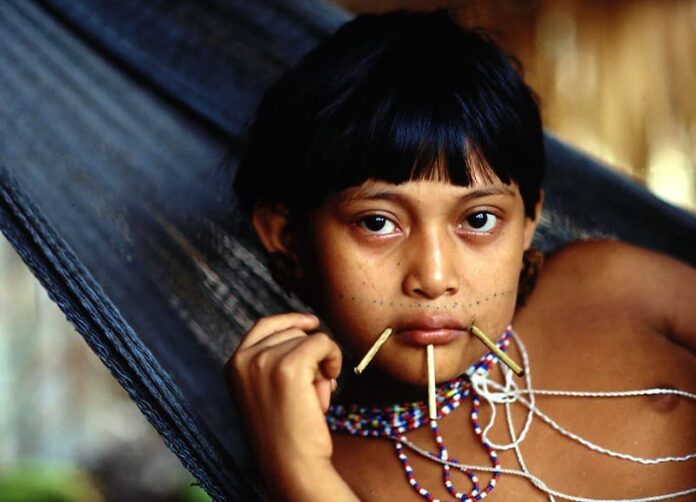
Beauty Standard: Piercing Sticks
Where: Brazil
Piercing is very common in many tribes throughout the world, and it is no different in the Yanomami tribe. Women in this tribe decorate their faces with sticks that pierce their cheeks and lips during traditional ceremonies and gatherings. The common positions of the stick are on the lips and nose which are determined by a person’s gender. Many anthropologists believe that the stick piercing is either decorative or a mark of adolescence. Meanwhile, some sources claim that Yanomami tribe members have sticks going through their ears and faces for ceremonial and decoration purposes. The information about this tribe is not so abundant because they are the least contacted indigenous people since they are violent.
Related Post: Dangerous Tribes & Uncontacted Peoples

